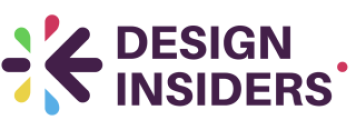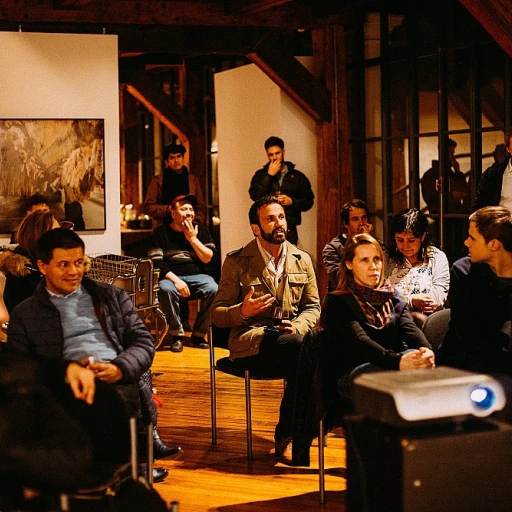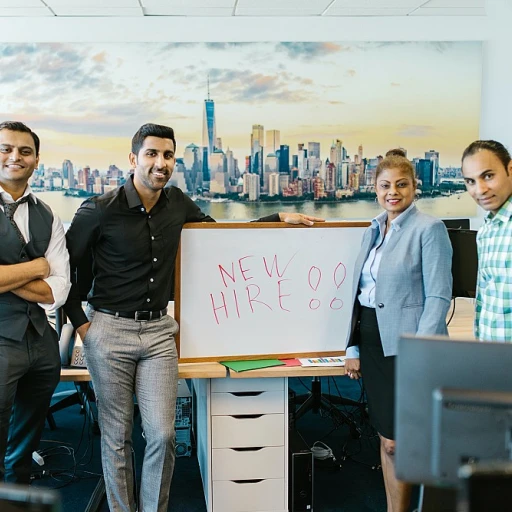
Understanding the basics of av and vr in design
What Makes AV and VR Essential in Modern Design?
Audio visual (AV) and virtual reality (VR) technologies are reshaping how designers approach their work. At their core, these immersive technologies blend digital and physical worlds, allowing users to interact with virtual objects and environments in real time. The integration of AV and VR systems into design processes means that the user experience is no longer limited to flat screens or static images. Instead, designers can create environments where users feel present, thanks to head mounted displays, reality headsets, and haptic feedback devices.
Key Concepts: Virtual, Augmented, and Mixed Realities
Understanding the differences between virtual reality, augmented reality, and mixed reality is crucial for anyone entering this field:
- Virtual reality (VR) immerses users in a fully digital environment, often using a headset like the Oculus Rift. Here, users interact with a computer-generated world, detached from the real environment.
- Augmented reality (AR) overlays digital information or virtual objects onto the real world, enhancing what users see and experience. This technology is increasingly used in design for real time visualization and prototyping.
- Mixed reality (MR) combines elements of both, allowing real and virtual objects to interact. This creates a seamless blend between the physical and digital, supporting more complex design scenarios.
How AV and VR Systems Work in Design
AV and VR systems rely on a combination of hardware and software. Headsets, sensors, and audio visual components work together to track user movements and deliver immersive experiences. Data from these systems can be used to adjust the virtual environment in real time, making the experience more responsive and engaging. Designers use these technologies to prototype, test, and refine concepts before moving to physical production, saving time and resources.
Why Immersive Experiences Matter
The shift toward immersive experiences is not just about novelty. It’s about creating more effective, engaging, and accessible design solutions. For example, training simulations using VR can provide realistic practice environments without real world risks. Similarly, AR can help users visualize products in their own environment before making a purchase. The potential for artificial intelligence to enhance these systems is also growing, enabling smarter, more adaptive design tools.
For a deeper look at how augmented reality is revolutionizing virtual design, explore this resource on augmented reality in virtual design.
How av and vr are changing the creative process
Shifting from Flat Screens to Immersive Environments
Virtual reality and augmented reality are pushing the boundaries of how designers approach the creative process. Instead of working solely on two-dimensional screens, designers now build immersive environments where users interact with virtual objects in real time. This shift means that the user experience is no longer limited to what fits on a monitor. With head mounted displays and reality headsets like the Oculus Rift, designers can prototype and test spaces, products, and interfaces in a fully immersive way.
Integrating Audio Visual and Haptic Feedback
Audio visual technology and haptic feedback systems are becoming essential in creating realistic and engaging experiences. Designers must consider how sound, touch, and even artificial intelligence-driven responses contribute to the overall environment. This integration of multiple sensory inputs allows for more natural interactions, making the virtual environment feel real and responsive. Mixed reality and extended reality systems further blur the line between the physical and digital worlds, offering new opportunities for creative expression.
Data-Driven Design and Real-Time Iteration
With immersive technologies, designers can collect data on user behavior within a virtual environment. This data helps refine the design process, enabling real-time adjustments and rapid prototyping. The ability to see how users interact with virtual objects or navigate augmented spaces leads to more user-centered solutions. Technologies like augmented virtuality and reality augmented systems allow for continuous feedback, making the creative process more dynamic and responsive.
Collaboration in Virtual Spaces
Collaboration is also evolving. Teams can work together in shared virtual environments, regardless of their physical location. Using video, audio, and shared virtual objects, designers and stakeholders can review concepts, provide feedback, and iterate together. This approach streamlines communication and accelerates decision-making, which is especially valuable in complex projects involving multiple disciplines.
For a deeper look at how immersive technologies are reinventing the creative process, explore how augmented reality is reinventing virtual design.
Challenges designers face when working with av and vr
Key Obstacles in Integrating Immersive Technologies
Designers working with virtual reality, augmented reality, and mixed reality face a unique set of challenges. As immersive technologies like audio visual systems, reality headsets, and haptic feedback become more common, the process of creating seamless user experiences grows more complex. Here are some of the main hurdles encountered:
- Technical Limitations: Many virtual reality and augmented reality systems require high-performance hardware, such as head mounted displays like the Oculus Rift. Ensuring compatibility across devices and maintaining real time rendering of virtual objects can be demanding, especially when working with large data sets or high-resolution video.
- User Experience Consistency: Designing for immersive experiences means considering how users interact with both virtual and real environments. Balancing augmented virtuality with physical space, and ensuring intuitive navigation, is a constant challenge. The integration of haptic feedback and audio visual cues must feel natural for the user.
- System Integration: Bringing together different technologies—such as artificial intelligence, image source processing, and extended reality platforms—requires expertise in both design and engineering. Achieving smooth interoperability between these systems is often a complex task.
- Content Creation and Adaptation: Creating assets for immersive environments is resource-intensive. Designers must generate 3D models, interactive elements, and responsive environments that adapt to user input in real time. This is especially true for training simulations or environments where the user’s actions directly affect the virtual system.
- Accessibility and Usability: Not all users are comfortable with immersive technologies. Some may experience motion sickness or discomfort with reality headsets. Ensuring that virtual and augmented reality experiences are accessible to a wide audience remains a significant barrier.
Data, Privacy, and Ethical Considerations
Another layer of complexity comes from handling user data within immersive environments. As virtual and augmented systems collect real time information about user movements and interactions, designers must prioritize privacy and ethical use of this data. This is particularly relevant when integrating artificial intelligence to personalize the experience. For more insights on the intersection of AI and design, you can read this analysis of artificial intelligence in design.
Keeping Pace with Evolving Technology
The rapid evolution of immersive technologies means that designers must constantly update their skills and adapt to new tools. From mastering new software for virtual environment creation to understanding the latest in reality augmented systems, staying current is essential for delivering cutting-edge user experiences.
New skills and tools required for av and vr design
Essential Capabilities for the Modern Designer
As audio visual and immersive technologies like virtual reality, augmented reality, and mixed reality become more integrated into the design environment, designers are expected to adapt quickly. The shift from traditional tools to advanced systems means learning new skills and mastering innovative technology. This transformation is not just about using a reality headset or creating a virtual object; it’s about understanding how these systems interact with users and the real world in real time.
Key Skills for Immersive Design
- 3D Modeling and Animation: Designers need to create virtual environments and objects that feel real and interactive. Familiarity with 3D software is now essential.
- Programming and Scripting: Knowledge of languages like C#, Python, or JavaScript helps in building interactive experiences and integrating data-driven elements into virtuality systems.
- User Experience (UX) for Immersive Technologies: Understanding how users interact with virtual and augmented environments is crucial. This includes designing intuitive interfaces for head mounted displays and reality headsets.
- Audio Visual Integration: Combining video, audio, and haptic feedback enhances the immersive experience. Designers must know how to synchronize these elements for maximum impact.
- Real-Time Rendering: Skills in optimizing graphics and system performance ensure smooth, responsive experiences in virtual environments.
- Familiarity with Hardware: Experience with devices like the Oculus Rift and other reality technology headsets is increasingly important for testing and refining immersive experiences.
- Data Visualization: Presenting complex information in engaging ways within augmented or virtual environments requires a strong grasp of visual communication and data integration.
Tools Shaping the Future of Design
The toolkit for designers is expanding rapidly. Popular platforms include Unity and Unreal Engine for building immersive experiences, along with specialized software for creating virtual objects and environments. Artificial intelligence is also playing a bigger role, helping automate repetitive tasks and personalize user experiences. As immersive technologies evolve, staying updated with the latest systems and tools will be key for any designer aiming to thrive in this new landscape.
Real-world applications of av and vr in design
Design in Healthcare, Education, and Retail
Virtual reality, augmented reality, and mixed reality are reshaping how design is applied across industries. In healthcare, immersive technologies like VR headsets and haptic feedback systems are used for surgical training, patient education, and therapy. These tools create realistic simulations, allowing users to practice in a safe virtual environment. In education, AR and VR enable interactive learning experiences, making abstract concepts tangible through virtual objects and real-time data integration. Retailers use augmented reality to let customers visualize products in their real environment before purchasing, enhancing the user experience and reducing returns.
Architecture and Interior Design: Visualizing Spaces
Designers in architecture and interior design are leveraging immersive technologies to present projects in a more engaging way. Using reality headsets such as Oculus Rift, clients can walk through a virtual representation of a building or room. This real-time visualization helps users understand spatial relationships and material choices before construction begins. Augmented virtuality systems overlay digital elements onto physical spaces, supporting collaborative decision-making and reducing costly revisions.
Product Design and Prototyping
Product designers benefit from virtual and augmented reality by creating prototypes that can be tested and modified in a virtual environment. This approach accelerates the design process, as changes can be made instantly without the need for physical models. Audio visual integration and immersive experiences allow teams to evaluate ergonomics, aesthetics, and functionality, improving the final product. Extended reality technologies also support remote collaboration, enabling global teams to work together in shared virtual spaces.
Entertainment and Media: New Forms of Storytelling
The entertainment industry has embraced immersive technologies to create engaging experiences. Video games, films, and live events use VR and AR to transport users into interactive worlds. Mixed reality systems blend real and virtual elements, offering new possibilities for storytelling and audience participation. These technologies rely on advanced image source processing, real-time rendering, and artificial intelligence to deliver seamless, believable environments.
Training and Simulation: Safer, More Effective Learning
Training programs across industries—from aviation to manufacturing—use virtual reality and augmented reality to simulate real-world scenarios. These systems provide hands-on experience without the risks associated with live training. Head mounted displays and immersive environments help users develop skills, respond to emergencies, and adapt to complex systems. The integration of data analytics enables trainers to monitor progress and tailor instruction for each user.
- Healthcare: VR for surgery and therapy
- Education: AR for interactive lessons
- Retail: Virtual try-ons and product visualization
- Architecture: Real-time walkthroughs with VR headsets
- Product Design: Virtual prototyping and testing
- Entertainment: Immersive storytelling with mixed reality
- Training: Safe, realistic simulations using immersive technologies
Future trends in av and vr for design professionals
Emerging Directions in Immersive Design
The rapid evolution of immersive technologies is shaping the future of design in ways that were unimaginable just a few years ago. As audio visual systems, virtual reality, and augmented reality become more integrated into design workflows, professionals are seeing a shift toward more interactive and user-centric experiences. The convergence of these technologies, often referred to as extended reality, is enabling designers to create environments that blend real and virtual elements seamlessly.
Key Trends to Watch
- Mixed Reality Integration: The line between augmented reality and virtual reality is blurring, giving rise to mixed reality systems. These allow users to interact with both real and virtual objects in real time, enhancing the sense of presence and engagement within a virtual environment.
- Advanced Headsets and Wearables: Devices like the Oculus Rift and other head mounted displays are becoming more accessible and powerful. Improvements in display resolution, field of view, and haptic feedback are making immersive experiences more convincing and comfortable for users.
- Artificial Intelligence and Data-Driven Design: AI is increasingly being used to personalize immersive experiences. By analyzing user data, systems can adapt virtual environments and augmented content to individual preferences, making each experience unique and relevant.
- Real-Time Collaboration: Design teams are leveraging virtual reality and augmented virtuality platforms to collaborate remotely in real time. This not only speeds up the creative process but also allows for more dynamic feedback and iteration.
- Enhanced Training and Simulation: Immersive technologies are being used for training in fields such as architecture, product design, and healthcare. Virtual reality and augmented reality provide safe, controlled environments where users can practice skills and visualize complex systems.
What This Means for Design Professionals
Designers will need to stay updated on the latest reality technology and immersive systems. Mastery of new tools, such as advanced video editing for virtual environments or the integration of haptic feedback, will be essential. Understanding how to create compelling user experiences in both real and virtual spaces will become a core competency.
As immersive experiences become more mainstream, the demand for designers who can bridge the gap between technology and human experience will only grow. The future of design is not just about creating beautiful visuals, but about crafting meaningful, interactive environments that engage users on multiple sensory levels.















